You searched for: ���AG������������qee9.com���������������������������RVcoIJUn
<< Previous | Displaying results 51-75 of 372 for "���AG������������qee9.com���������������������������RVcoIJUn" | Next >>
-
Antisemitism illustration from a Nazi film strip
PhotoAn antisemitic illustration from a Nazi film strip. The caption, translated from German, states: "As an alien race Jews had no civil rights in the middle ages. They had to reside in a restricted section of town, in a ghetto." Place and date uncertain.
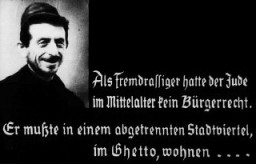
-
Norman Salsitz's daughter
PhotoNorman's daughter, Esther, at age one. April 1957. With the end of World War II and collapse of the Nazi regime, survivors of the Holocaust faced the daunting task of rebuilding their lives. With little in the way of financial resources and few, if any, surviving family members, most eventually emigrated from Europe to start their lives again. Between 1945 and 1952, more than 80,000 Holocaust survivors immigrated to the United States. Norman was one of them.
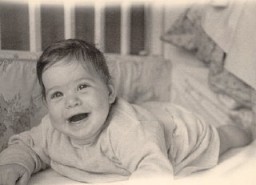
-
Reversal of Fortune: Robert Kempner
ArticleLawyer Robert Kempner was expelled from Germany in 1935. After WWII, he would return to serve as assistant US chief counsel during the IMT at Nuremberg.
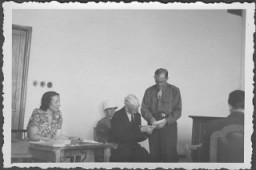
-
James Ingo Freed: Architect of the Museum
ArticleArchitect James Ingo Freed designed the United States Holocaust Memorial Museum.

-
Rut Berlinska
ArticleChildren's diaries bear witness to some of the most heartbreaking experiences of the Holocaust. Learn about the diary and experiences of Rut Berlinska.
-
Miriam Goldberg
ArticleChildren's diaries bear witness to some of the most heartbreaking experiences of the Holocaust. Learn about the diary and experiences of Miriam Goldberg.
-
Israel Unikowski
ArticleChildren's diaries bear witness to some of the most heartbreaking events of the Holocaust. Learn about the diary and experiences of Israel Unikowski.
-
Jewish Parachutists from Palestine
ArticleLearn about a group of Jewish men and women from Palestine who parachuted into German-occupied Europe to organize resistance and aid in the rescue of Allied personnel
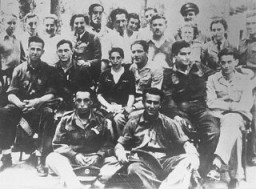
-
Hidden Children: Expressions
ArticleJewish children in hiding during the Holocaust created writing, art, diaries, and more. Read about the surviving documentation of their experiences.
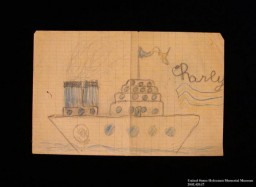
-
Yitzhak Gitterman
ArticleYitzhak Gitterman was a director of the American Jewish Joint Distribution Committee in Poland and a member of the underground Jewish Fighting Organization.
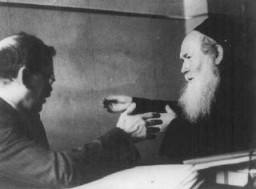
-
Mira Shelub
ArticleRead the Jewish Partisan Educational Foundation's short biography of Mira Shelub.
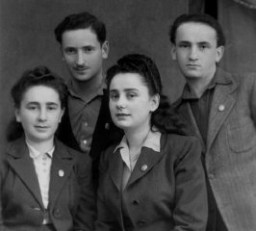
-
Morris Hillquit
ArticleMorris Hillquit was a prominent theoretician of the socialist movement in the United States. His work was burned in the Nazi book burnings of 1933. Learn more.
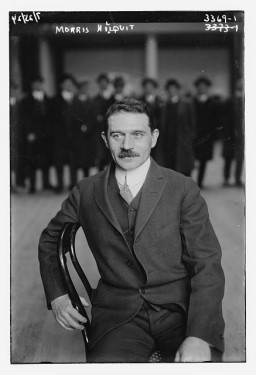
-
Lindenfels Displaced Persons Camp
ArticleAfter WWII, many Holocaust survivors, unable to return to their homes, lived in displaced persons camps in Germany, Austria, and Italy. Read about Lindenfels DP camp.
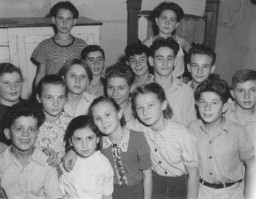
-
Wagner-Rogers Bill
Timeline EventFebruary 9, 1939. On this date, the Wagner-Rogers bill was introduced, ultimately unsuccessfully, to permit the entry of 20,000 European refugee children into the United States.
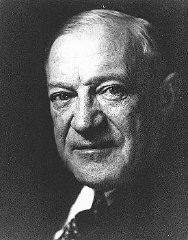
-
Chuna Grynbaum: Maps
Media EssayChuna Grynbaum was born to Jewish parents in Starachowice, Poland in 1928. When he was 13 years old, Chuna was sent to forced labor at a munitions factory. In 1943, he attempted to escape with his sister, Faiga. Faiga...
-
Aron and Lisa Derman: Oral History Excerpts
Media EssayIn 1942, Aron Derman and Lisa Nussbaum escaped deportation from the Grodno ghetto with the help of Tadek Soroka, a non-Jewish Pole. Aron and Lisa—aged 19 and 15—joined the armed Jewish resistance. As partisans, they f...
-
Einsatzgruppen massacres in eastern Europe (enlargement)
MapEinsatzgruppen were German special duty units, composed primarily of SS and police personnel, assigned to kill Jews as part of the Nazi program to kill the Jews of Europe. During the invasion of the Soviet Union in June 1941, the mobile killing squads followed the German army as it advanced deep into Soviet territory, and carried out mass-murder operations. Wherever the Einsatzgruppen went they shot Jewish men, women, and children, without regard for age or gender. Einsatzgruppen killed more than a…

-
Jewish parachutist Hannah Szenes with her brother
PhotoJewish parachutist Hannah Szenes with her brother, before leaving for a rescue mission. Palestine, March 1944. Between 1943 and 1945, a group of Jewish men and women from Palestine who had volunteered to join the British army parachuted into German-occupied Europe. Their mission was to organize resistance to the Germans and aid in the rescue of Allied personnel. Hannah Szenes was among these volunteers. Szenes was captured in German-occupied Hungary and executed in Budapest on November 7,…

-
Norman Salsitz's wife and daughter
PhotoNorman's daughter, Esther, at three weeks of age, with her mother, Amalie. September 1956. With the end of World War II and collapse of the Nazi regime, survivors of the Holocaust faced the daunting task of rebuilding their lives. With little in the way of financial resources and few, if any, surviving family members, most eventually emigrated from Europe to start their lives again. Between 1945 and 1952, more than 80,000 Holocaust survivors immigrated to the United States. Norman was one of them.
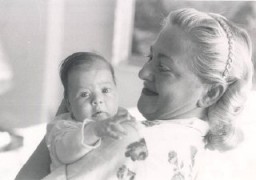
-
Theresienstadt: Other Prisoners
ArticleLearn more about the fate of Jewish prisoners that were deported to Theresienstadt from places other than the Greater German Reich or the Protectorate.
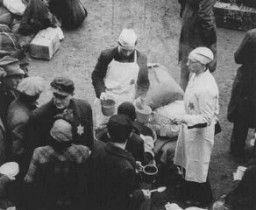
-
Salonika
ArticleSalonika, Greece was invaded and occupied by the Nazis in 1941. Learn more about the fate of the Jews in Salonika during World War II.
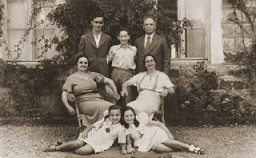
-
Karl Marx
ArticleKarl Marx was a political theorist and philosopher. He published “The Communist Manifesto” with Friedrich Engels. His works were burned in Nazi Germany in 1933.
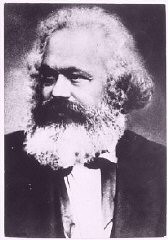
-
Meir Porges
ArticleRead the Jewish Partisan Educational Foundation's short biography of Meir Porges.
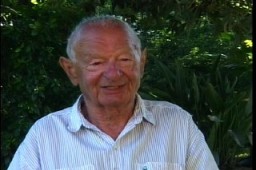
-
Alexander White
ArticleRead the Jewish Partisan Educational Foundation's short biography of Alexander White.
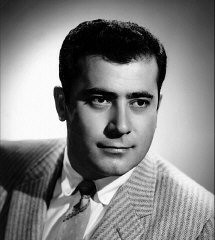
-
Emil Ludwig
ArticleEmil Ludwig was a liberal journalist and popular biographer whose works were burned under the Nazi regime in 1933. Learn more.
